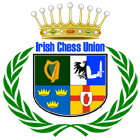A reviewer of Liu Wenzhe's book, The Chinese School of Chess, opines that, of the "schools" which the author identifies - Italian (Romantic), Classical (Steinitz-Tarrasch), Hypermodern (Nimzowitsch), Soviet and Chinese - only the Soviet and it's resultant splintered national academies (along with the Chinese) can be called "schools" as the West would think of them.
The first three are really "approaches" or "styles" of chess - the latter two, state-run/funded institutions.
It is possible that something was lost in translation - the Chinese concept of a style goes hand-in-hand with the concept of a school, as evidenced by the many martial arts schools which existed throughout Chinas history.
Near the start of the book, amongst other things, it lists the Goals and Contributions of the various schools in a cross-table. Against the Chinese school, it lists thought and sensibility (Goal) and non-logical domain, strategy of competition (Contribution).
It appears that the game of chess, far from being a descendant of the Indian game of chaturanga, is most likely derived from a older precursor of chess - from China. We also learn that the West knows nothing about the importance of the harmony of the pieces yet I seem to recall a dictum of Dr. Siegbert Tarrasch, the Praeceptor Mundi (Teacher of the World), where he declares that If you have one badly placed piece, then your whole position is bad!.
The book itself, at times, gives the impression of flag-waving perhaps this is in keeping with the countrys recent realisation of its growing importance in the world.
Not to be outdone in flag-waving...
Ireland also has experienced its own economic growth, as a result of which were now referred to as Europes Celtic Tiger. Although, prior to our recent economic success, Irish people have contributed to the world in many ways throughout our history including chess.
A recent example of Irelands contribution to chess is what has erroneously been called the Irish Pawn Centre. Technically, it is actually the Irish Pawn Formation - to give it its correct term - as this pawn structure can occur anywhere on the board.
There are arguments in both academic and ecclesiastical circles as to whether this pawn formation is due to Ireland being a Roman Catholic country, where the Holy Trinity is a pillar of Christian belief perhaps due to the formation resembling a pillar comprised of a trinity of pawns.
There are dark rumours that the Irish "school" is working (in secret) on the "Shamrock" or Four-leafed Clover Formation - featuring quadrupled pawns - which may soon be unleashed on some poor unsuspecting GM or World Champion in a tournament or simul. [Its believed that this is a black project - under the code-name Seamróg - led by IM Sam Collins, into obscure opening lines which might lead to this even more frighteningly lethal pawn formation.]
Another example of how Christianity in Ireland may be influencing chess, according to academia, is the popular belief in the extraordinary power of the bishops whether one on its own or, especially, with two in communion.
Of course, there's also the other side of the coin concerning the influence of alcohol on chess, resulting in premature and violent attacks involving unsound sacrifices.
Perhaps the Goal of the Irish school could be described as belief and spirit!?
In Ireland, many gambits and questionable variations are known under another players name - Feckett ("That's 'Beckett' with a 'F'", as many anecdotes report him telling his opponents, when they cocked an eyebrow, before dutifully writing down their illustrious opponents name) - after the legendary 19th-century Irish attacking player, Asher Feckett.
During the emigration from Ireland, due to the Famine, many of his ideas were brought to America and became the bread-and-butter of US amateurs the length and breadth of that country. Indeed, many were taken up by that stalwart of the late 19th century coffee-house chess scene, Arletts Govorit.
Just as there is anecdotal evidence which suggests that Staunton avoided a match with Morphy, there is similar evidence that the latter avoided a match with the great Feckett on the grounds that he didnt come to Ireland.
To this day, Irish people all over the world still invoke the legend's name before embarking on a risky venture.
Although there isn't a officially-recognised Irish "school" of chess at least, not by Liu Wenzhe - perhaps there should be one set up in memory of this unsung Irish hero and his contribution to the world of chess.
